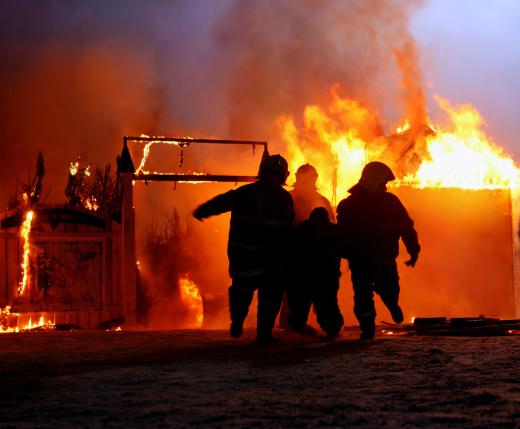A propane stove is a stovetop powered with tanks or canisters of propane. The most common applications for this type of stove are small stoves that are portable and can be taken on camping trips, or propane or gas barbecues that feature one or more stovetop burners. A stove that runs on propane, when not used for camping or outdoor cooking can also make good sense to keep on hand in case of emergencies. If problems leave you without a means to heat food, using a propane stove can save you from eating your meals cold.
In most cases in the US, people do not have indoor propane stoves unless their house is supplied with propane. When this is the case, there is appropriate ventilation which keeps these stoves safe. Camping stoves and gas grills are never safe to use indoors. They do not provide adequate ventilation and could create toxic hazards for you and your family. If you were in a situation where you needed to use such a stove at home, you should still use the stove outdoors in a well-ventilated area.

The camping propane stove can range from the simple to the complex. The simplest forms feature one or two burners. You normally have to buy a small tank of propane to go with the stove. Other camping stoves can feature three or four burners, for people who might enjoy elaborate outdoor cooking. Yet if your camping needs are basic, perhaps requiring a burner or two to make coffee or heat up beans, you can get by with the simplest stove. They’re lighter, smaller and easier to pack.

The advantage of bringing a propane stove on a camping trip is heat control. Unlike cooking over an open fire, which is in itself an art, cooking on a stove of this type allows you to adjust the height of the flames. This generally results in meals that are evenly cooked and not charred.
Many people also use their propane stovetop burners on gas grills to cook outdoors when the weather is hot. Some also recommend their use when you need to cook anything that would make the house smelly, a common problem in smaller homes and apartments.

With any propane stove, you should observe several safety precautions. When cooking outdoors, find an even surface on which to cook. If you’re not using a campfire pit provided at camping ground, consider placing the stove directly on any grill. Keep the stove away from brushy areas, as much as possible, to avoid fire hazards. Also, make sure the stove is not near tents and is in an open area so that propane gas does not accidentally vent into sleeping quarters.
You should take some care in how you store propane tanks. They should not be kept in temperatures that will exceed 120 F (48.89 C). This means, especially in hot weather, propane canisters do not belong in your car or your trailer. If you have children, keep the propane stove out of reach of kids, and consider disconnecting the tank when the stove is not in use.
